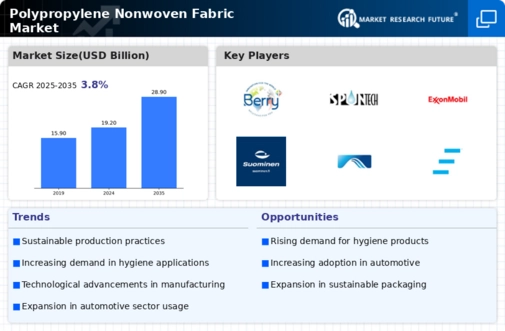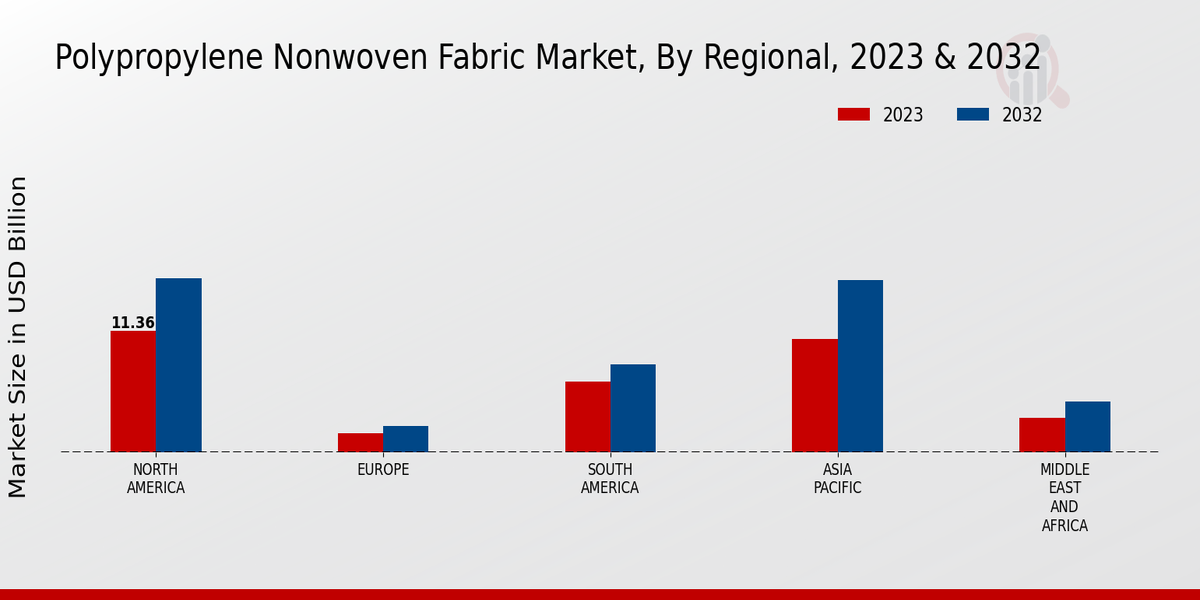Market Growth Projections
The Global Polypropylene Nonwoven Fabric Market Industry is poised for substantial growth, with projections indicating a market value of 19.2 USD Billion in 2024 and an anticipated increase to 28.9 USD Billion by 2035. This growth trajectory reflects a compound annual growth rate (CAGR) of 3.82% from 2025 to 2035. Such figures suggest a robust demand for polypropylene nonwoven fabrics across various applications and industries. The increasing adoption of these materials in sectors like healthcare, automotive, and construction further supports this growth outlook, indicating a promising future for the industry.
Sustainability Initiatives
Sustainability initiatives are becoming increasingly pivotal in the Global Polypropylene Nonwoven Fabric Market Industry. Manufacturers are actively seeking eco-friendly alternatives and production methods to reduce environmental impact. The shift towards biodegradable and recyclable nonwoven fabrics aligns with global sustainability goals, appealing to environmentally conscious consumers. This trend is expected to bolster market growth as companies innovate to meet these demands. The anticipated market growth from 2025 to 2035 at a CAGR of 3.82% suggests that sustainability will play a crucial role in shaping the industry's future, as stakeholders prioritize sustainable practices.
Growing Demand in Healthcare Sector
The Global Polypropylene Nonwoven Fabric Market Industry experiences a notable surge in demand from the healthcare sector. Nonwoven fabrics are extensively utilized in medical applications, including surgical gowns, masks, and drapes, due to their excellent barrier properties and breathability. The increasing focus on hygiene and infection control in healthcare settings drives this demand. In 2024, the market is projected to reach 19.2 USD Billion, reflecting the essential role of polypropylene nonwoven fabrics in maintaining safety standards. As healthcare facilities expand globally, the reliance on these materials is likely to grow, indicating a robust future for the industry.
Technological Advancements in Production
Technological advancements in the production of polypropylene nonwoven fabrics are transforming the Global Polypropylene Nonwoven Fabric Market Industry. Innovations in manufacturing processes, such as spunbond and meltblown technologies, enhance the efficiency and quality of nonwoven fabrics. These advancements enable manufacturers to produce lighter, stronger, and more cost-effective materials, catering to evolving consumer preferences. As production techniques improve, the market is likely to witness increased competitiveness and growth. The projected market value of 28.9 USD Billion by 2035 underscores the potential impact of these technological developments on the industry's trajectory.
Versatile Applications Across Industries
The versatility of polypropylene nonwoven fabrics contributes significantly to the Global Polypropylene Nonwoven Fabric Market Industry. These materials find applications in various sectors, including automotive, construction, and agriculture. For instance, in agriculture, they are used for crop covers and weed control, while in construction, they serve as geotextiles. This broad applicability enhances market resilience, as demand fluctuates across different industries. The ongoing expansion of these sectors globally indicates a sustained need for nonwoven fabrics, further solidifying their importance in diverse applications and driving market growth.
Rising Consumer Awareness and Preferences
Rising consumer awareness regarding the benefits of polypropylene nonwoven fabrics is a driving force in the Global Polypropylene Nonwoven Fabric Market Industry. Consumers increasingly recognize the advantages of these materials, such as durability, lightweight properties, and cost-effectiveness. This heightened awareness influences purchasing decisions across various sectors, including personal care and hygiene products. As consumers prioritize quality and performance, manufacturers are compelled to innovate and enhance their product offerings. This shift in consumer preferences is likely to contribute to sustained market growth, as the industry adapts to meet evolving demands.
























